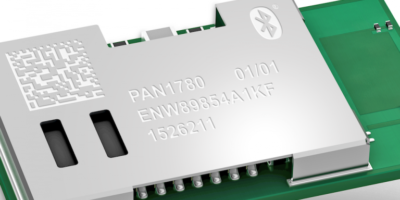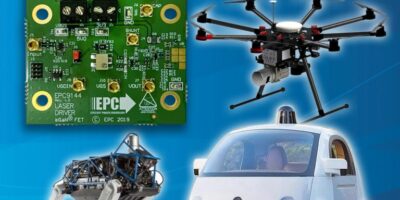The long range Bluetooth 5.0 module, the PAN1780, is for IIoT and smart home applications, says Panasonic Industry Europe. The module is based on the Nordic nRF52840 SoC controller. It has an output power of up to +8dBm and the high sensitivity of the nRF52840 which is combined with the low energy-coded PHY.
It also enables a higher symbol rate of 2Mbits per second, using the high-speed Bluetooth Low Energy (LE) 2M PHY. The new LE advertising extensions allow for much larger amounts of data to be broadcasted in connectionless scenarios, says Panasonic Industry Europe.
The module’s qualified Bluetooth mesh profile stack supports Bluetooth LE 5.0 with 802.15.4 and NFC-A. The Cortex M4F processor, 256kB RAM and the built-in 1Mbyte flash memory enable it to be used in standalone mode, eliminating the need for an external processor. This saves complexity, space and cost, says Panasonic Industry. A variant with an AT command set, the PAN1780AT, is available.
The compact module measures just 15.6 x 8.7 x 2.0mm and features an Arm TrustZone Cryptocell 310 security core that supports a secure boot process. A temperature sensor is integrated in the PAN1780 module. The operating temperature range is -40 to +85 degrees C and the supply voltage ranges from 1.7V to 5.5V.
The PAN1780 module is suitable for industrial IoT applications, such as devices for smart city infrastructure, industrial mesh networks or robotics within Industry 4.0 environments. It is also suitable for smart health and secure medical peripherals or building automation applications like smart locks or intelligent lighting. The Cryptocell also makes it suitable for edge computing.
Panasonic Corporation develops electronics technologies and solutions for customers in the consumer electronics, housing, automotive, and B2B businesses. The company celebrated its 100th anniversary in 2018 and operates 582 subsidiaries and 87 associated companies worldwide.
Panasonic Industry Europe is part of the global Panasonic Group and provides automotive and industrial products and services in Europe.







